Sometimes it feels that in today’s world of instant electronic gratification, there is less time and appreciation for an art form that demands the kind of dedication and homage of an artisanal apprenticeship. Eagle hunting as practiced by the burkitshi, or eagle hunters, is such an art.
Since the 1400s, birds of prey have been used to hunt in Altai in western Mongolia, near the modern day borders with China, Kazakstan and Russia. It’s said that Chinggis Khan had 5,000 such hunters in his army when he ruled over the largest contiguous land empire in history.
I anticipated feeling sad in the part of our trip to be with burkitshi in Altai, the way I have for 15 years after spending a weekend on Lake Ohrid in TFYR of Macedonia in 2002. There I met an elderly man who fashioned remarkably intricate, traditional silver filigree jewellery. It was an art he’d learned from his father, who had learned it from his father, but there was no one left in the younger generation who wanted to learn. His eyesight was failing and he mourned the slow death of this art. I give silent acknowledgement to him whenever I wear a piece he made.
Similarly, I had been reading about the end of the eagle hunting tradition among the Kazakh nomads. The story was similar: an eagle hunter who had honed his skills under his father’s tutelage, who had in turn been tutored by his father. The burkitshi was finishing the last hunting season after which he would release his last eagle to the wild and there was no one younger to whom the tradition had been passed. (See The New Yorker, Slate, TIME, and CNN.)
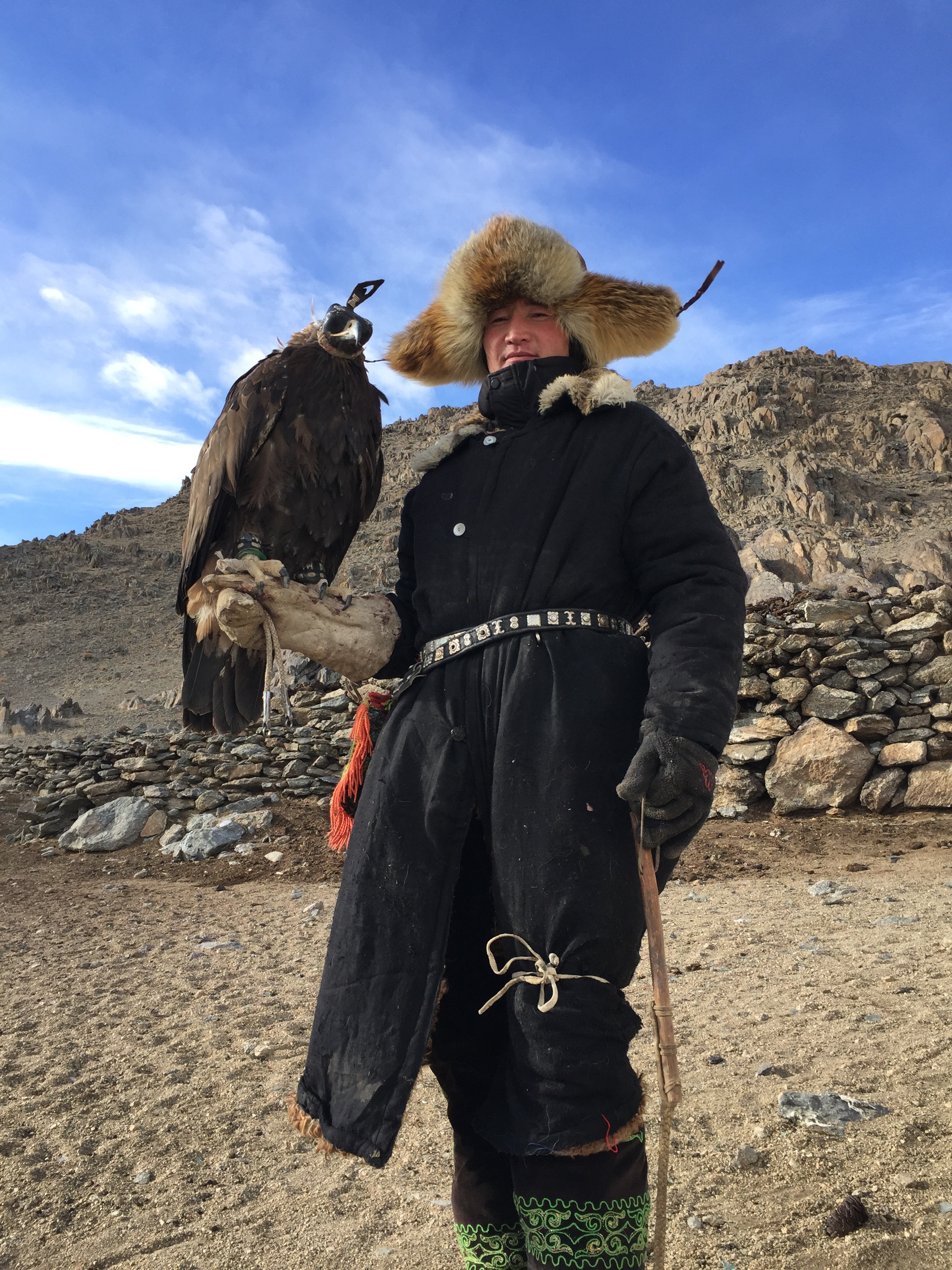
It’s certainly true that eagle hunters are no longer as pervasive as centuries ago, but it’s equally true that there remains a vibrant and competitive burkitshi community. So it was with great joy that we stayed with the Nurgaiv family in Bayaan Olgii, Kazakh nomads where the tradition is not only alive but adopted across multiple generations.
What’s more, the youngest eagle hunter in the family is a 13-year-old girl named Aisholpan, her brother is pictured above with their eagle. Her story and that of this enlightened family’s break with tradition, as well as what it takes to be an eagle hunter, is told in the just-released documentary, ‘The Eagle Huntress.’ Every review, from Sundance to the New York Times, recommends this as an uplifting and empowering narrative. Go see it!
Our hands-on experience was remarkable, and one that we will never forget. (C is already asking to return to Mongolia!)
It’s not as easy as it looks. And by that I’m not even referring to the entire process of hunting with eagles, which involves impressive coordination of two people and the eagle – one riding high up on the ridges with the eagle, and a second riding down below to flush out game. (We did flush a fox, but he was too wily!) No, I refer merely to being able to turn your arm into a sturdy eagle perch.
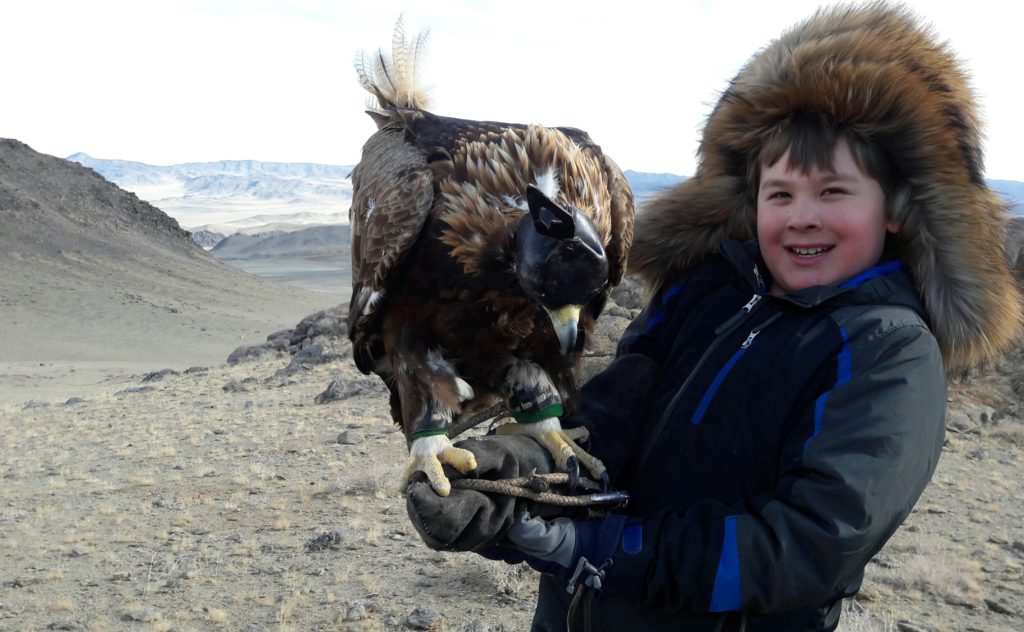
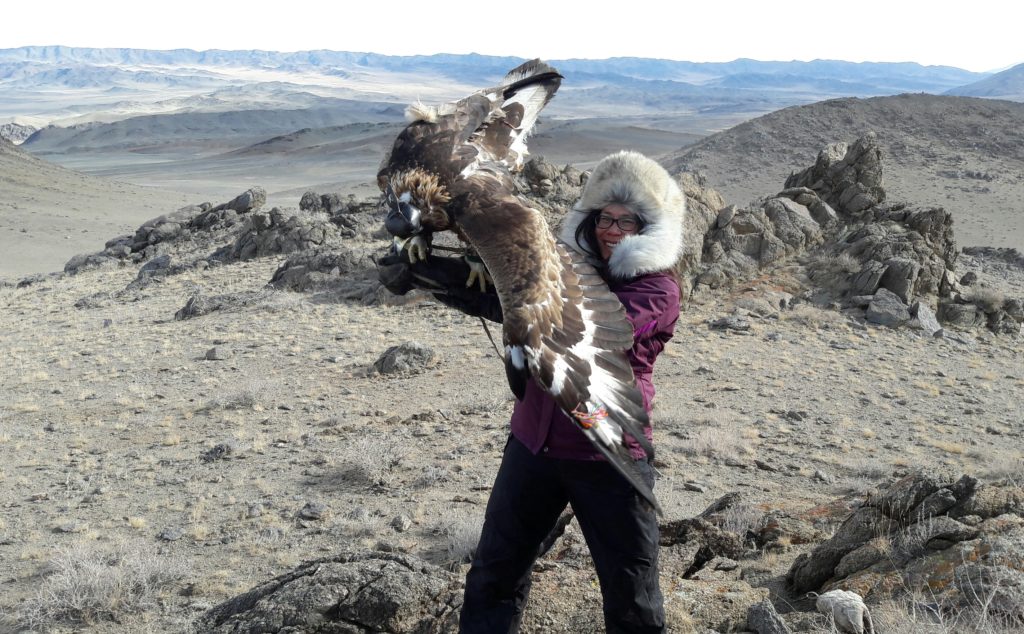
In response to my suggestion that he might not be strong enough to hold an eagle, C had been doing some strengthening exercises, and in the weeks before our trip would hold out his arm and challenge me to push down on it. He had no problem holding either of the two eagles we spent time with – one belonging to Aisholpan’s family, the other belonging to her uncle, and both I believe star in the documentary. On the other hand, I managed to hold one sensibly but sent the other eagle into a dance of constant readjustment, flapping and at one point, alarmingly ended up with it hanging upside down!
This is inspiring stuff, so much so that we had to retrieve C off a cliff when we went to see an eagle nest. He was taken by the idea of seeing if there were any chicks (nope, wrong season), and fancied himself like Temujin (Chinggis Khan’s birth name) about whom it is told climbed up a soaring cliff to an eagle nest to retrieve a pair of chicks for hunting. A parental reminder to self: like the moment when you realize your infant can scoot much further and faster than you can imagine, so too can 9-year-olds scale cliffs much faster and higher than you might imagine!
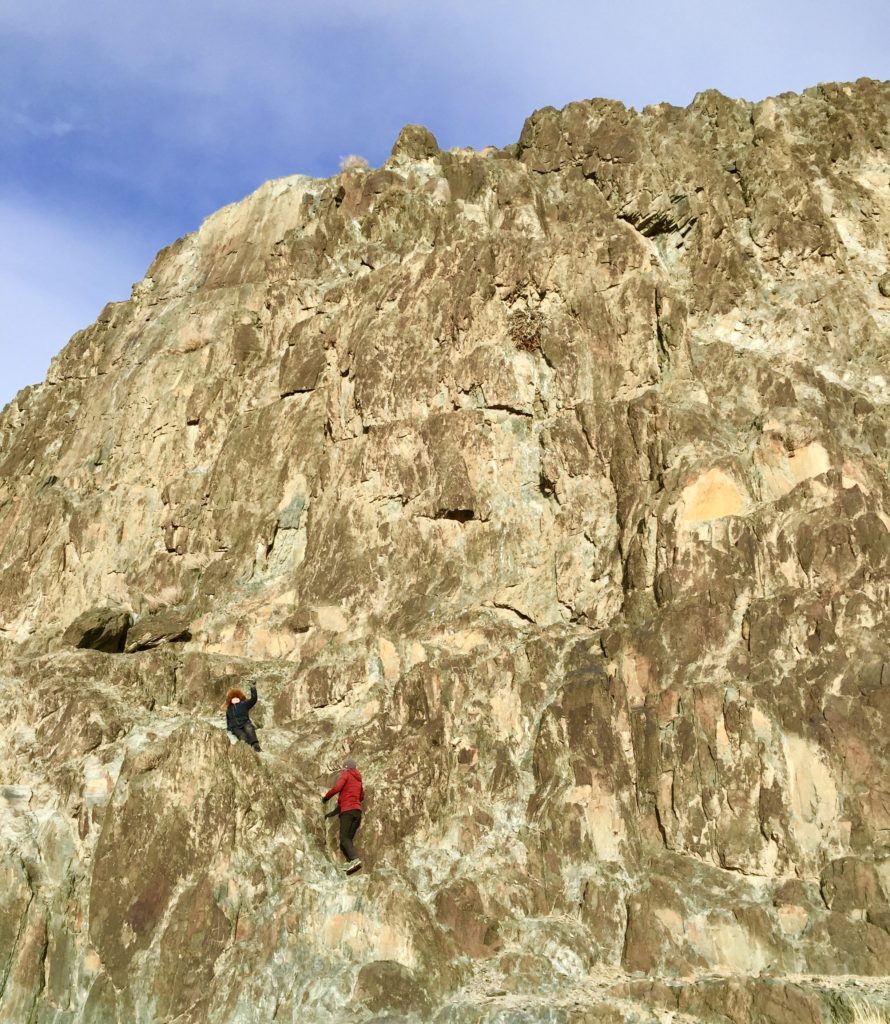
It didn’t help that our current bedtime reading is Conn Iggulden’s five-book historical fiction Conqueror series, which relates how “in conquering one-fifth of the world’s inhabited land, Chinggis Khan changed the course of history forever,” and also tells the eagle chick story. This trip has certainly been a great way to engage with history.
This is a symbiosis of grace and majesty. Most enduring though, was our constantly awed experience of the power, grace and majesty of these golden eagles, and the close and caring symbiotic relationship they have with the hunters. In this harsh environment – the day we took these photos had a high of -17C not factoring in the vicious wind chill – one cannot but admire the Kazakhs who are intimately adapted to the environment and have called this area home for centuries.
There is opportunity to keep this aerial art form alive and soaring. Visitors like us have a positive role to play in sustaining this life by supplementing the direct benefits of eagle hunting, which provide food in winter and pelts for clothes. Fox hats like C’s, for example, are products of such hunting and the traditional burkitshi hats with the ‘wings’ are made only from the pelts of the legs of foxes. Interest in the annual Golden Eagle Festival has grown so much recently that even the increased flight schedule is now sold out almost a year in advance. (That’s okay, you get to take the scenic and rugged three-day drive instead.) Opportunities to stay with nomadic Kazakh families and share in their daily life is an intimate gift to guests. C especially loved being able to tend the fire and herd the goats across the steppe.
We hope that like the Kazakh proverb, fierce eagles along with fine horses will long remain the wings of the Kazakhs.

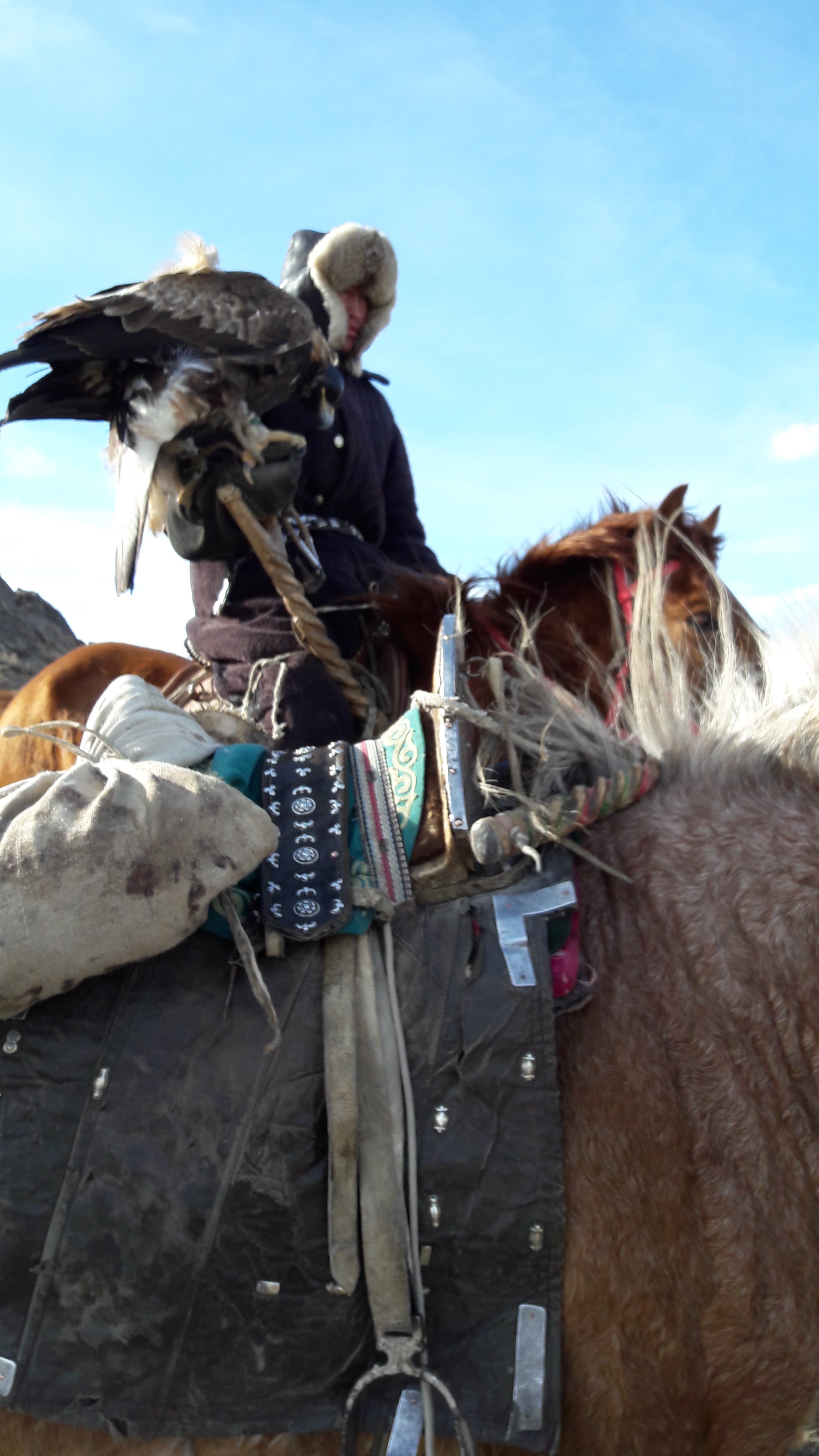
Comments are closed